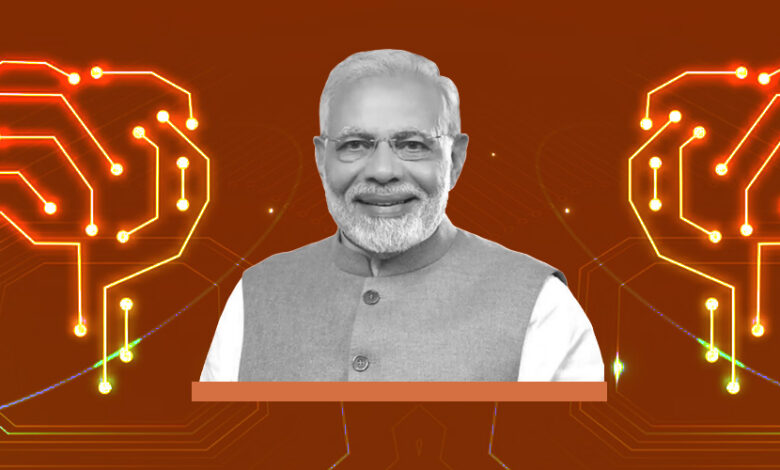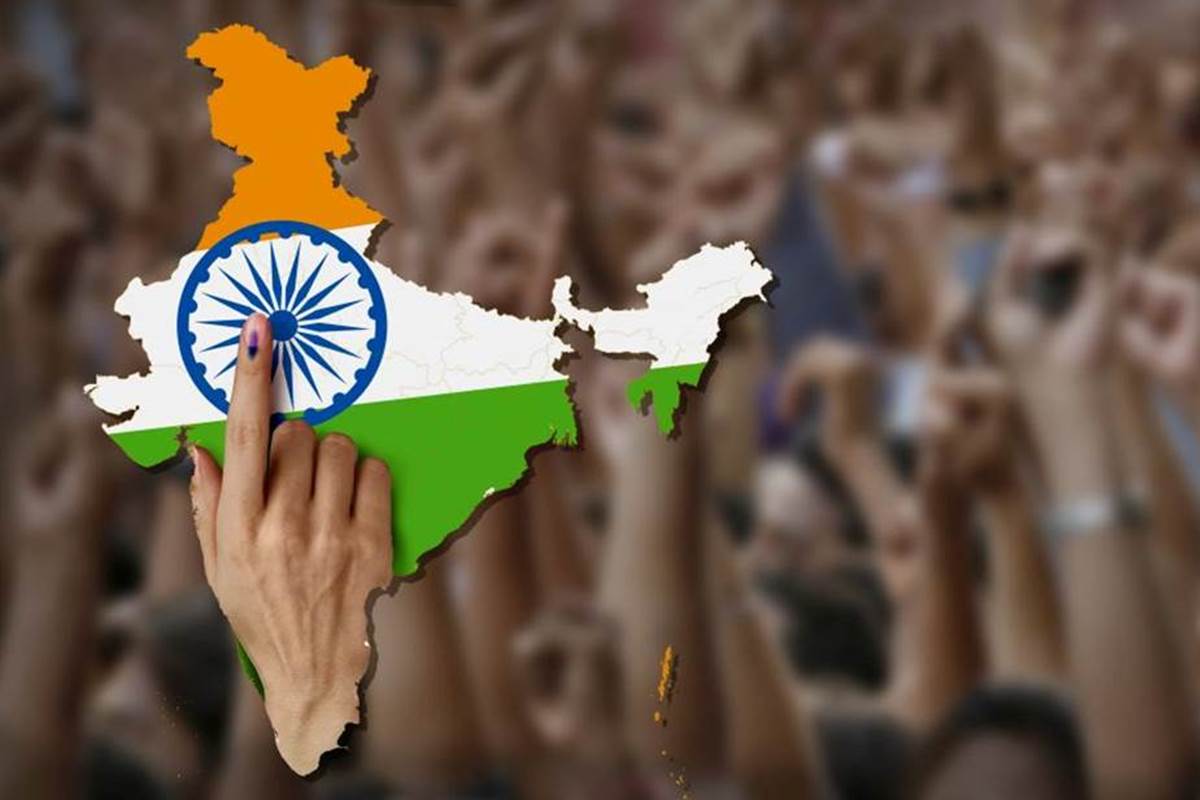AI Use In Elections, A Surge Of Modi AI Images On Instagram Violating Meta Rules, How AI Is Changing The Election Game In India And Worldwide?
In political advertising, Artificial Intelligence, AI has emerged as a powerful tool, wielded not only by tech-savvy marketers but also by political leaders themselves. However, recent revelations about AI-generated political advertisements on social media platforms, particularly in the context of India's upcoming elections, have sparked concerns about transparency and manipulation, a powerful tool that could also be misleading!

AI or Artificial Intelligence has found new takers, and they are none other than political leaders who are using AI to ‘shine’; however, the ads do not meet the levels of disclosure Meta says the platform needs for AI-generated posts, especially linked to India’s election, raising questions about enforcement.
One striking example surfaced in early March when an AI-generated image portraying Indian Prime Minister Narendra Modi as Bhishma Pitamah, a revered figure from the Hindu epic Mahabharata, circulated as a boosted political advertisement on Instagram.
The image, crafted by the right-wing page Hokage Modi Sama, aimed to depict Modi as a modern-day incarnation of Bhishma, embodying strength, valour, and Hindu leadership.
There is perhaps nothing wrong with this. However, a closer examination of political advertisements on platforms like Instagram and Facebook, facilitated by Meta’s Ad Library, revealed a significant proliferation of AI-generated images portraying Modi in various mythological and nationalist avatars.
Hokage Modi Sama emerged as a leading advertiser, promoting nearly 50 such pieces over a span of three months.
These AI-generated images not only valorize Modi but also serve to reinforce the stamp of Hindu nationalism, positioning him as a divine figure and the epitome of leadership in a Hindu-majoritarian India.
The strategic use of AI imagery seeks to cultivate an aura of unwavering loyalty and invincibility around Modi, crucial elements in shaping public perception in the run-up to elections.

AI Changing The Electoral Game, Meta Caught
While these AI-generated political ads may appear innocuous at first glance, they raise significant questions about the adequacy of existing regulations and enforcement mechanisms on social media platforms.
One of the primary concerns revolves around the potential for manipulation and misinformation.
AI technology enables the creation of hyper-realistic images that blur the lines between fact and fiction, making it increasingly difficult for users to discern authentic content from manipulated propaganda.
In the context of political advertising, where perception can sway public opinion and influence electoral outcomes, the unchecked proliferation of AI-generated content poses a significant threat to the integrity of democratic processes.
Moreover, the lack of transparency surrounding the creation and dissemination of AI-generated political ads exacerbates these concerns. Without clear disclosure requirements, voters are left in the dark about the origins and intentions behind such content, rendering them susceptible to manipulation and exploitation by political actors.

Meta’s Transparency Laws
The revelations surrounding the use of AI-generated political advertisements on social media platforms have intensified scrutiny on Meta’s enforcement of transparency measures ahead of India’s crucial 2024 election year.
Meta’s announcement in January mandating disclosure for political ads created using AI; however, recent findings suggest that significant challenges still need to be addressed in ensuring compliance with these policies.
In the 30 days leading up to March 29, Hokage Modi Sama, a prominent online advertiser, allocated substantial resources to boost political content on its Instagram page.
According to Meta Ad Library data, the group spent 537,799 Indian rupees ($6,500) to boost 363 pieces of political content, including images and videos.
Alarmingly, nearly 14 percent of these sponsored advertisements—amounting to 50 images—were AI-generated.
While Hokage Modi Sama attempted to disclose the use of AI through hashtags such as #aiartwork, #midjourneyart, and #midjourneyai, Meta deemed these disclosures insufficient.
According to Meta, hashtags alone do not fulfill the requirement for clear and conspicuous disclosure. Instead, Meta insists on adding a label directly on the advertisement indicating that it is digitally created or altered.
Despite Meta’s assertion, such labels were conspicuously absent from Hokage Modi Sama’s AI advertisements, thus raising questions about Meta’s effectiveness in enforcing its own policies and holding advertisers accountable for compliance.
Moreover, Meta’s response to inquiries regarding the potential violation of its policy regarding depictions of real individuals engaging in fictitious activities or events was vague and inconclusive.
Prateek Waghre, the executive director of the India-based Internet Freedom Foundation (IFF), emphasized the importance of content creators acknowledging the use of AI-generated images to comply with Meta’s disclosure requirements.
While hashtags like #aiart may hint at the nature of the content, a more explicit form of disclosure is necessary to ensure transparency and accountability.
AI In Indian Elections
The use of AI in Indian election campaigns extends beyond mere deception to the construction of strategic narratives that shape public perception and influence political discourse.
While the threat of AI-generated misinformation, including deepfakes, looms large, the primary concern lies in the subtle manipulation of narratives through generative AI technology.
Indian election campaigns have witnessed a gradual proliferation of AI-generated images and videos, ranging from the resurrection of deceased political leaders to the creation of campaign art for official party accounts.
Rather than solely aiming to deceive voters, these AI-generated materials are harnessed to craft compelling stories that resonate with target audiences.
Amogh Dar Sharma, a lecturer at the University of Oxford specializing in political communications, emphasizes the nuanced impact of AI-generated content on shaping political propaganda.
According to Sharma, AI enables the production of content that is not only creative but also draws upon innovative cultural references, making it more engaging and shareable. This, in turn, facilitates widespread circulation and amplification of political messaging.
A prime example of this phenomenon is the popularity of AI-generated images like “Our Saffron Superhero,” posted by the Hokage Modi Sama page.
The image portrays Modi as a “saffron-clad guardian of India’s future,” adorned in traditional attire and walking beneath the “Om” flag, a revered Hindu symbol – with nearly two million likes and a slew of comments endorsing the vision of India as a Hindu nation, such images serve to mythologize Modi and reinforce his image as a visionary leader.
Sharma observes that while the practice of mythologizing political leaders or integrating them into Hindu epics is not new, AI technology lends a new level of finesse to these efforts.
The AI-generated images of Narendra Modi represent the latest iteration of the Bharatiya Janata Party’s (BJP) long-standing strategy to cultivate a cult of personality around him, portraying him as a wise and sensible leader.

Global Phenomenon
The emergence of AI-generated political content is not limited to the realm of Indian politics; it has become a global phenomenon with far-reaching implications for democracy and public discourse.
While platforms like Instagram and Facebook provide a fertile ground for the dissemination of such content, the lack of explicit disclaimers and transparency measures raises concerns about its potential misuse and manipulation.
The case of Hokage Modi Sama exemplifies this trend, with its history of publishing pro-Hindutva and pro-BJP content without clear affiliations to Modi’s Bharatiya Janata Party (BJP).
The page perpetuates narratives that mythologize political leaders and promote ideological agendas by leveraging AI-generated imagery. Despite attempts to contact the page’s administrator, the lack of response shows the opacity surrounding the origins and intentions behind such content.
The global reach of AI-generated political content is equally troubling, with instances reported in various countries, including the United States, Argentina, and Indonesia.
From strategic outreach campaigns to rebranding efforts, political actors are increasingly turning to AI technology to shape public perception and gain electoral advantage.

Indian Misleading Content
In India, the misuse of AI-generated images has been particularly pronounced, with instances of false portrayals of political leaders and events reported during state elections in Telangana.
Fact-checking outlets like BOOM Live have uncovered misleading AI images depicting regional leaders and opposition figures, aimed at influencing voter sentiment and swaying public opinion.
Of particular concern are the targeted efforts to appeal to influential voting blocs, such as farmers, through deceptive AI-generated content.
The use of fake images depicting opposition leader Rahul Gandhi interacting with farmers highlights the strategic manipulation of narratives to garner support and undermine political opponents.
Despite the inclusion of hashtags indicating AI generation, the lack of clear disclosure and transparency measures undermines the integrity of the electoral process and erodes public trust in political discourse.
Global Story
There is a notable contrast in the approaches taken by platforms in Western countries compared to those in the Global South in addressing the proliferation of AI-generated images ahead of elections.
For instance, in an effort to curb potential misuse of AI images leading up to the November US presidential elections, the popular AI image-generator Midjourney implemented a ban on the creation of fake images depicting President Joe Biden and Donald Trump in March.
However, similar proactive steps have not been taken in India, prompting concerns about the equitable enforcement of policies by tech platforms across different regions.
Baybars Orsek, the managing director of Logically Facts, highlighted this discrepancy, noting that while Midjourney has implemented measures in the West, no such actions have been observed in India.
Logically Facts, as part of Meta’s third-party fact-checking program and the misinformation combat alliance in India, is deeply engaged in monitoring and addressing misinformation in the country.
Orsek emphasized that such disparities in moderation policies stress the need for greater scrutiny of global platforms’ approaches, particularly in regions like the Global South, where significant political events such as elections carry substantial implications.
This discrepancy mirrors broader trends seen in social media companies’ moderation policies, where a Western-centric focus often overlooks perspectives and challenges unique to the Global South, as noted by Prateek Waghre, executive director of the India-based Internet Freedom Foundation (IFF).
The Last Bit, As India braces for a pivotal election year in 2024, it is imperative that regulators and platforms alike take proactive measures to address the challenges posed by AI-generated political advertising.
It calls for robust enforcement of disclosure policies, enhanced transparency measures, and public awareness campaigns to educate users about the potential pitfalls of AI-manipulated content.
In an era where technology permeates every facet of political discourse, safeguarding elections’ integrity is paramount.




